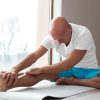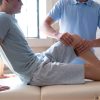When to see a Physiotherapist
Preventing injuries is essential for maintaining an active and healthy lifestyle. Whether you’re an athlete, a fitness enthusiast, or simply enjoy staying active, implementing prevention strategies and knowing when to seek professional help can save you from unnecessary pain and downtime. Here are some tips for injury prevention:
1. Warm up and cool down
A proper warm-up is crucial for preparing your body for physical activity. It increases blood flow to muscles, enhances flexibility, and reduces the risk of strains. Cooling down helps your body recover and prevents stiffness.
Warm up examples:
- Dynamic stretches: Perform arm circles, leg swings, or walking lunges to loosen up joints and muscles.
- Light cardio: Spend 5–10 minutes brisk walking, jogging, or cycling to elevate your heart rate.
- Sport specific movements: Do practice drills like shadowboxing for boxing, light ball passes for soccer, or a few swings before golf.
Cool-Down examples:
- Gentle stretching: Stretch key muscle groups, such as quads, hamstrings, and shoulders, holding each stretch for 15–30 seconds.
- Relaxed walking: Slow down your pace to allow your heart rate to return to normal.
2. Strengthen and stretch
Building strength and maintaining flexibility are critical for reducing injury risks. Strong muscles and stable joints provide better support during physical activities.
Strengthening examples:
- Core Exercises: Planks, side planks, and bird dogs improve stability and reduce the risk of back injuries.
- Resistance Training: Squats, lunges, and push-ups strengthen major muscle groups to handle daily or athletic demands.
Stretching examples:
- Yoga Poses: Downward Dog or Child’s Pose improve flexibility and release tension.
- Static Stretching: Post-exercise stretches like touching your toes or a butterfly stretch can improve muscle recovery.
3. Maintain good technique
Using proper form ensures that movements distribute stress evenly across your body, reducing strain on joints and muscles.
Technique tips:
- Running: Focus on a mid-foot strike rather than a heel strike to avoid knee injuries.
- Weightlifting: Engage your core and keep your back straight during deadlifts or squats to protect your lower back.
- Sports: Follow coaching advice on technique, such as a correct swing in tennis to avoid elbow strain.
4. Listen to your body
Your body sends warning signals when something isn’t right. Ignoring pain or discomfort can lead to more severe injuries over time.
Examples of listening to your body:
- Minor aches: If you feel a dull ache in your knees after running, consider changing your shoes or running surface.
- Persistent pain: Shoulder pain during overhead movements might indicate a rotator cuff issue that needs assessment.
- Fatigue: Rest if you feel unusually tired or weak during workouts—it could be your body signaling the need for recovery.
5. Use the right equipment
Wearing proper gear and using appropriate equipment can significantly lower the risk of injury.
Examples of proper equipment use:
- Footwear: Runners should invest in shoes designed for their gait, while court players need shoes with ankle support.
- Protective gear: Use helmets for cycling, shin guards for soccer, or wrist guards for skateboarding.
- Ergonomic equipment: For desk workers, adjust your chair and screen height to prevent repetitive strain injuries.
When to see a Physiotherapist
Despite your best efforts, injuries can still happen. A physiotherapist can assess, treat, and provide strategies to prevent further complications.
Situations where Physio can help:
- Acute Pain or Swelling: For example, an ankle sprain after a misstep during a hike.
- Limited Mobility: Struggling to lift your arm overhead due to shoulder stiffness could indicate impingement.
- Chronic Aches: Persistent lower back pain from prolonged sitting at work.
- Post-Surgery or Injury Recovery: Guided rehabilitation for ACL reconstruction or rotator cuff repair ensures a safe recovery.
- Performance Optimisation: Runners seeking to improve their stride efficiency or tennis players aiming to enhance their serve mechanics.





